A Study on the Effect of Ignition Timing on Residual Gas, Effective Release Energy, and Engine Emissions of a V-Twin Engine
Abstract
:1. Introduction
2. Experiment Setup and Material
2.1. Experiment Setup
2.2. Simulation Model Setup
3. Results and Discussions
3.1. Model Validation
3.2. Results
4. Conclusions
- (1)
- This paper denotes a major impact on residual gas ratio, effective release energy, performance, and characteristics of emissions resulting from ignition timing. The minimal residual gas proportion was 0.07% with a revolution speed of 8000 rpm and ignition timing of 10 °CA. Moreover, at 15 °CA of ignition timing, the highest effective release energy was 0.817 kJ at 4000 rpm, while at 8000 rpm, it was 0.8305 kJ at 25 °CA. At 6000 rpm, the highest braking torque was 21.57 Nm, while the minimal BSFC was 343.821 g/kWh.
- (2)
- The peak firing temperature and peak pressure rise increase until achieving a maximum value when ignition timing increases. The peak firing pressure and peak pressure rise reached a maximum with a revolution of the engine at 6000 rpm and timing of ignition at 45 °CA. The maximum values are 108.36 bar and 9.71 bar/deg, respectively.
- (3)
- At various speeds of the engine, an optimum ignition timing value exists, and the engine will provide the best performance at that value. The optimum ignition timing was found to be 20 °CA at 4000 rpm in this analysis. The optimum ignition timing is 30 °CA and 35 °CA at 6000 rpm and 8000 rpm, respectively.
- (4)
- BMEP and IMEP rapidly increase to a peak. In the next stage, the trend reverses steadily. At each revolution speed, the optimal values of BMEP and IMEP at the same time as the ignition timing were reported.
- (5)
- The residual gases play a key role in the characteristics of carbon monoxide emission. With increased residual gas, a reduction of the fresh air on the next charge will result. Hence, the growth of the residual gases directly increases carbon monoxide emission. The nitrogen oxide emission and HC emission increase with the advanced ignition timing.
Author Contributions
Funding
Institutional Review Board Statement
Informed Consent Statement
Data Availability Statement
Conflicts of Interest
Nomenclature
| TDC | Top dead center | A | Total surface area of cylinder head, piston and cylinder (m2) |
| BTDC | Before top dead center | qcoeff | Heat transfer coefficient (W/m2K) |
| ATDC | After top dead center | K | Ratio of specific heats (-) |
| BSFC | Brake specific fuel consumption (g/kWh) | VD | Displacement volume (m3) |
| BMEP | Brake mean effective pressure (bar) | Teff | Engine effective torque (Nm) |
| IMEP | Indicated mean effective pressure (bar) | n | Engine speed (rpm) |
| FMEP | Friction mean effective pressure (bar) | mair | Air mass flow (kg/s) |
| SMEP | Scavenging mean effective pressure (bar) | The air mass flow rate | |
| HC | Hydrocarbon | Tc | The combustion gas temperature (K) |
| CA | Crank angle, deg | Tw | The wall temperature of the cylinder (K) |
| SI-engine | Spark ignition engine | Aeff | The effective flow area (-) |
| CI-engine | Compression ignition engine | QT | Heat lost to the wall (W/m2) |
| m | Shape parameter (-) | ||
| a | Vibe parameter | ||
| Qh | Total fuel input (W) |
References
- Muneer, T.; Asif, M.; Munawwar, S. Sustainable production of solar electricity with particular reference to the Indian economy. Renew. Sustain. Energy Rev. 2005, 9, 444–473. [Google Scholar] [CrossRef]
- Sayin, C.; Ertunc, H.M.; Hosoz, M.; Kilicaslan, I.; Canakci, M. Performance and exhaust emissions of a gasoline engine using artificial neural network. Appl. Therm. Eng. 2007, 27, 46–54. [Google Scholar] [CrossRef]
- Khoa, N.X.; Lim, O. Comparative Study of the Effective Release Energy, Residual Gas Fraction, and Emission Characteristics with Various Valve Port Diameter-Bore Ratios (VPD/B) of a Four-Stroke Spark Ignition Engine. Energies 2020, 13, 1330. [Google Scholar] [CrossRef] [Green Version]
- Khoa, N.X.; Lim, O. The Internal Residual Gas and Effective Release Energy of a Spark-Ignition Engine with Various Inlet Port–Bore Ratios and Full Load Condition. Energies 2021, 14, 3773. [Google Scholar] [CrossRef]
- Elfasakhany, A. Investigations on performance and pollutant emissions of spark-ignition engines fueled with n-butanol–, isobutanol–, ethanol–, methanol–, and acetone–gasoline blends: A comparative study. Renew. Sustain. Energy Rev. 2017, 71, 404–413. [Google Scholar] [CrossRef]
- Raviteja, S.; Kumar, G. Effect of hydrogen addition on the performance and emission parameters of an SI engine fueled with butanol blends at stoichiometric conditions. Int. J. Hydrogen Energy 2015, 40, 9563–9569. [Google Scholar] [CrossRef]
- Chan, S.H.; Zhu, J. Modelling of engine in-cylinder thermodynamics under high values of ignition retard. Int. J. Therm. Sci. 2001, 40, 94–103. [Google Scholar] [CrossRef]
- Soylu, S.; Van Gerpen, J. Development of empirically based burning rate sub-models for a natural gas engine. Energy Convers. Manag. 2004, 45, 467–481. [Google Scholar] [CrossRef]
- Hedfi, H.; Jedli, H.; Jbara, A.; Slimi, K. Modeling of a bioethanol combustion engine under different operating conditions. Energy Convers. Manag. 2014, 88, 808–820. [Google Scholar] [CrossRef]
- Li, J.; Gong, C.M.; Su, Y.; Dou, H.L.; Liu, X.J. Effect of injection and ignition timings on performance and emissions from a spark-ignition engine fueled with methanol. Fuel 2010, 89, 3919–3925. [Google Scholar] [CrossRef]
- Beatrice, C.; Belgiorno, G.; Di Blasio, G.; Mancaruso, E.; Sequino, L.; Vaglieco, B.M. Analysis of a Prototype High-Pressure “Hollow Cone Spray” Diesel Injector Performance in Optical and Metal Research Engines; SAE Technical Paper: Warrendale, PA, USA, 2017. [Google Scholar] [CrossRef]
- Vassallo, A.; Beatrice, C.; Di Blasio, G.; Belgiorno, G.; Avolio, G.; Pesce, F.C. The Key Role of Advanced, Flexible Fuel Injection Systems to Match the Future CO2 Targets in an Ultra-Light Mid-Size Diesel Engine; SAE Technical Paper: Warrendale, PA, USA, 2018. [Google Scholar] [CrossRef]
- Mohan, B.; Yang, W.; Kiang Chou, S. Fuel injection strategies for performance improvement and emissions reduction in compression ignition engines—A review. Renew. Sustain. Energy Rev. 2013, 28, 664–676. [Google Scholar] [CrossRef]
- Bae, C.; Kim, J. Alternative fuels for internal combustion engines. In Proceedings of the Combustion Institute, In Press. [CrossRef]
- Raheman, H.; Ghadge, S.V. Performance of diesel engine with biodiesel at varying compression ratio and ignition timing. Fuel 2008, 87, 2659–2666; [Google Scholar] [CrossRef]
- Xie, F.X.; Li, X.P.; Wang, X.C.; Su, Y.; Hong, W. Research on using EGR and ignition timing to control load of a spark-ignition engine fueled with methanol. Appl. Therm. Eng. 2013, 50, 1084–1091. [Google Scholar] [CrossRef]
- Anderson, J.E.; DiCicco, D.M.; Ginder, J.M.; Kramer, U.; Leone, T.G.; Raney-Pablo, H.E.; Wallington, T.J. High octane number ethanol–gasoline blends: Quantifying the potential benefits in the United States. Fuel 2012, 97, 585–594. [Google Scholar] [CrossRef]
- Sayin, C. The impact of varying spark timing at different octane numbers on the performance and emission characteristics in a gasoline engine. Fuel 2012, 97, 856–861. [Google Scholar] [CrossRef]
- Binjuwair, S.; Alkudsi, A. The effects of varying spark timing on the performance and emission characteristics of a gasoline engine: A study on Saudi Arabian RON91 and RON95. Fuel 2016, 180, 558–564. [Google Scholar] [CrossRef]
- Heywood, J.B. Internal Combustion Engine Fundamentals; McGraw-Hill Book Company: New York, NY, USA, 1988. [Google Scholar]
- Shi, W.; Yu, X.; Zhang, H.; Li, H. Effect of spark timing on combustion and emissions of a hydrogen direct injection stratified gasoline engine. Int. J. Hydrogen Energy 2017, 42, 5619–5626. [Google Scholar] [CrossRef]
- Elsemary, I.M.; Attia, A.A.; Elnagar, K.H.; Elsaleh, M.S. Spark timing effect on performance of gasoline engine fueled with mixture of hydrogen-gasoline. Int. J. Hydrogen Energy 2017, 42, 30813–30820. [Google Scholar] [CrossRef]
- Zhang, B.; Ji, C.; Wang, S. Combustion analysis and emissions characteristics of a hydrogen-blended methanol engine at various spark timings. Int. J. Hydrogen Energy 2015, 40, 4707–4716. [Google Scholar] [CrossRef]
- Yousufuddin, S.; Masood, M. Effect of ignition timing and compression ratio on the performance of a hydrogen-ethanol fueled engine. Int. J. Hydrogen Energy 2009, 34, 6945–6950. [Google Scholar] [CrossRef]
- Khoa, N.X.; Lim, O. The effects of combustion duration on residual gas, effective release energy, engine power and engine emissions characteristics of the motorcycle engine. Appl. Energy 2019, 248, 54–63. [Google Scholar] [CrossRef]
- Zareei, J.; Kakaee, A.H. Study and the effects of ignition timing on gasoline engine performance and emissions. Eur. Transp. Res. Rev. 2013, 5, 109–116. [Google Scholar] [CrossRef] [Green Version]
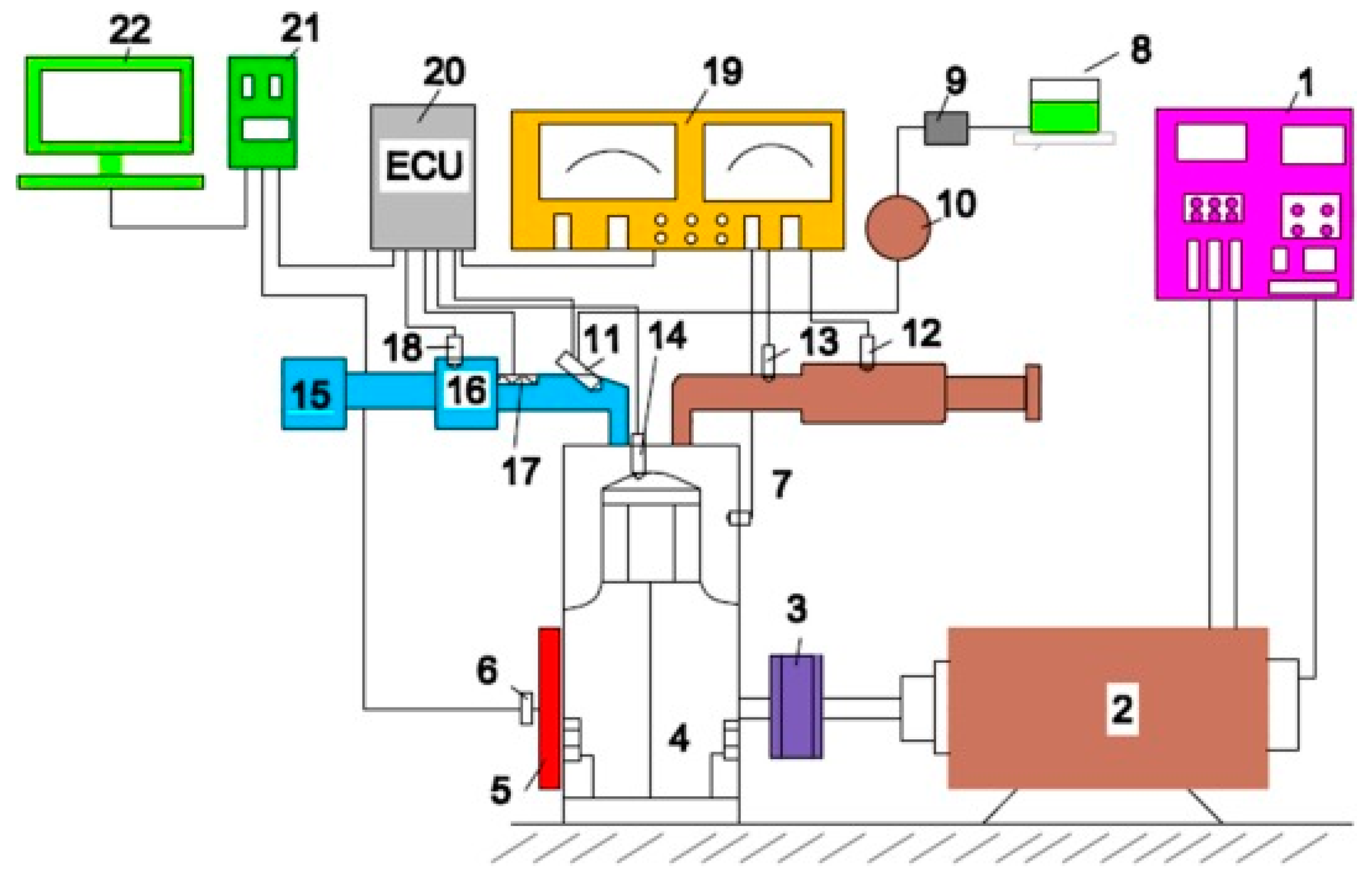
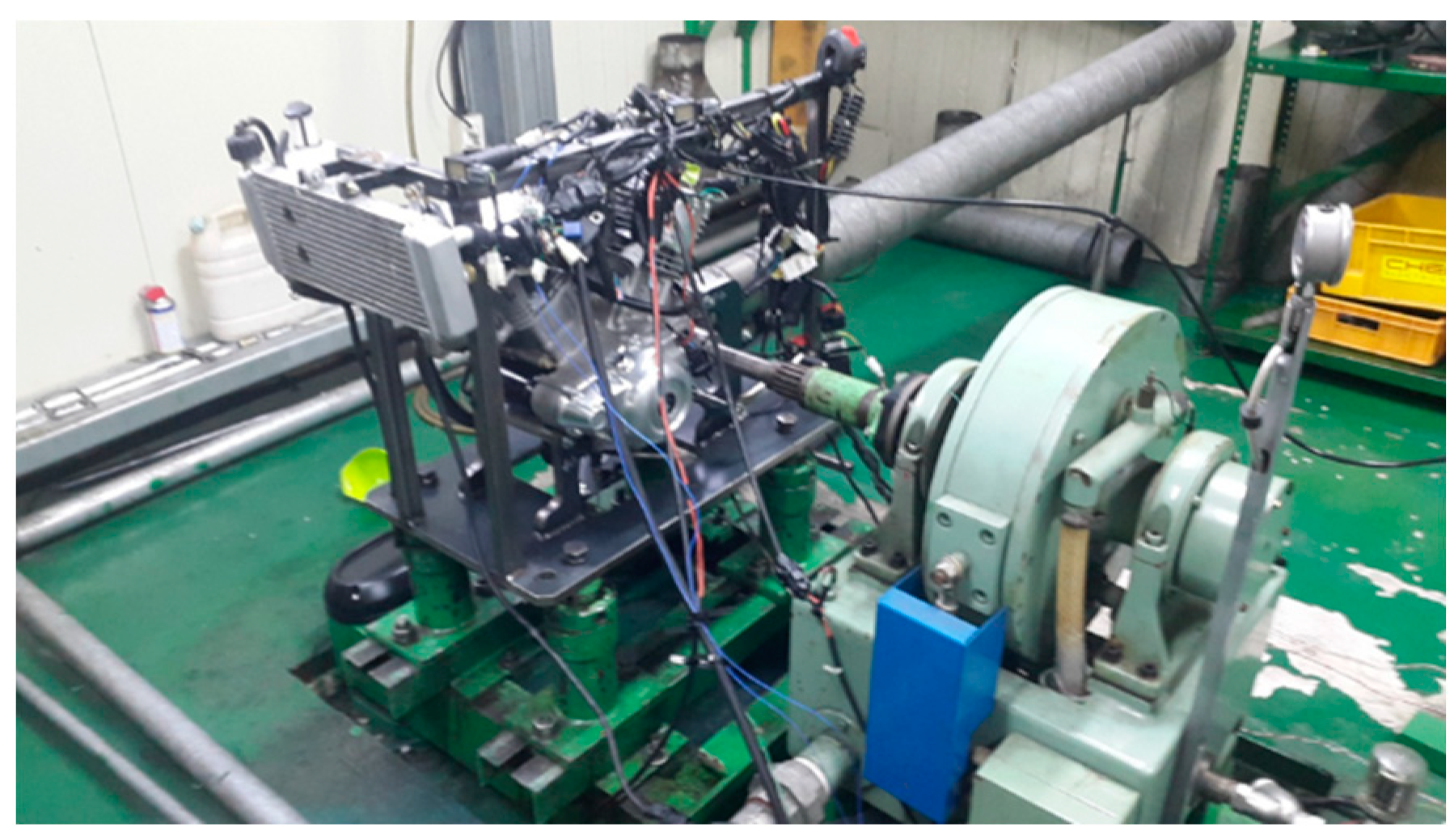

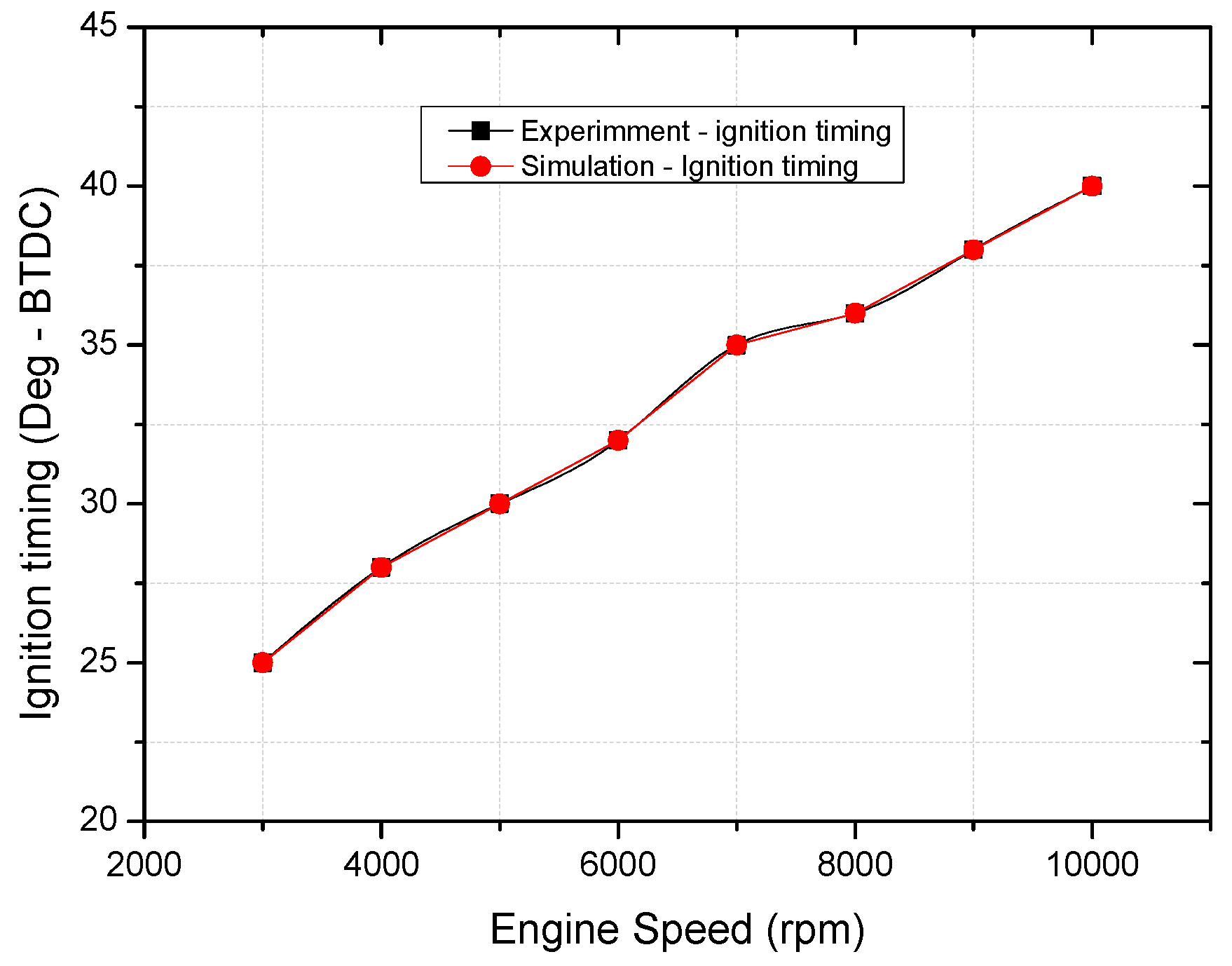

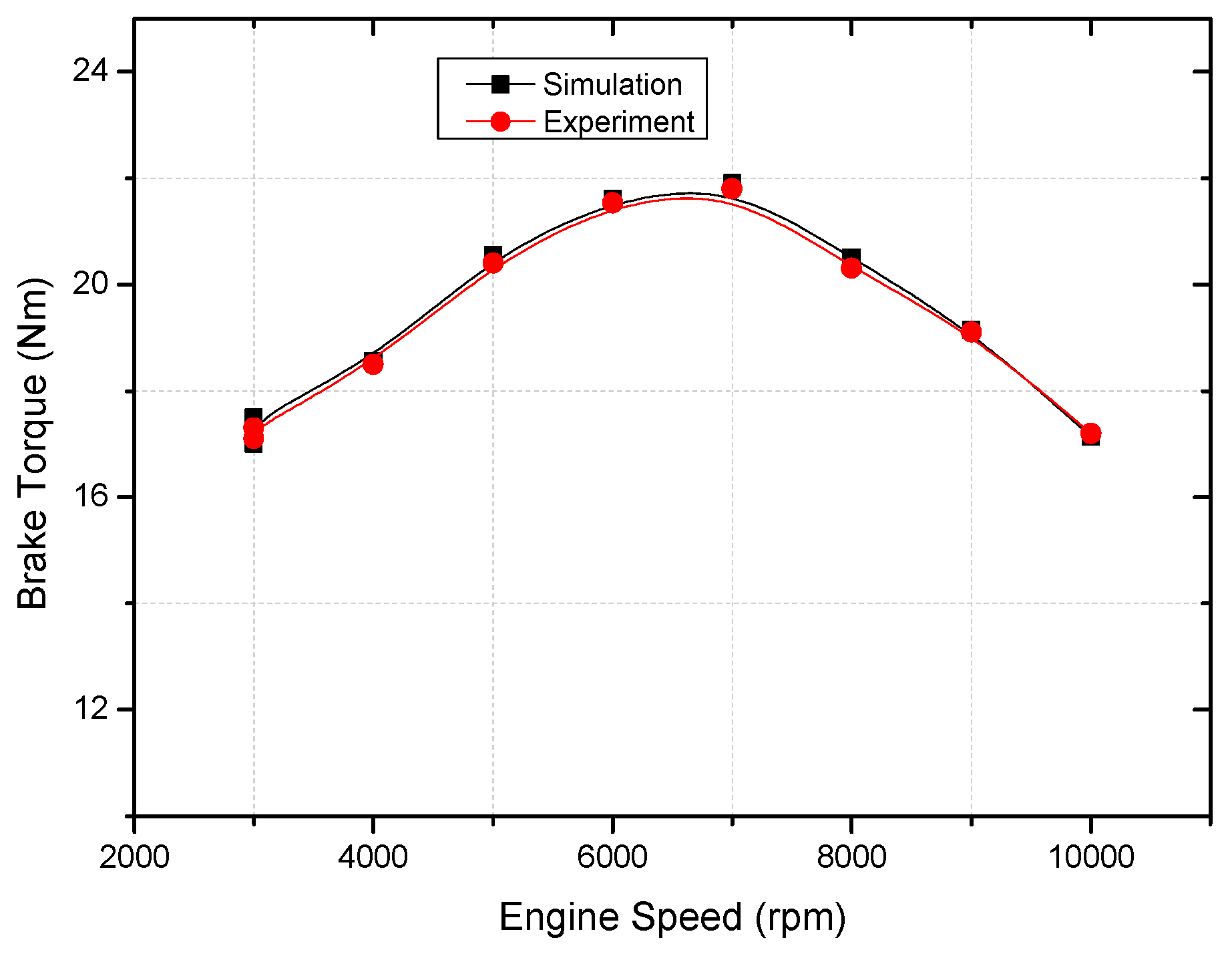
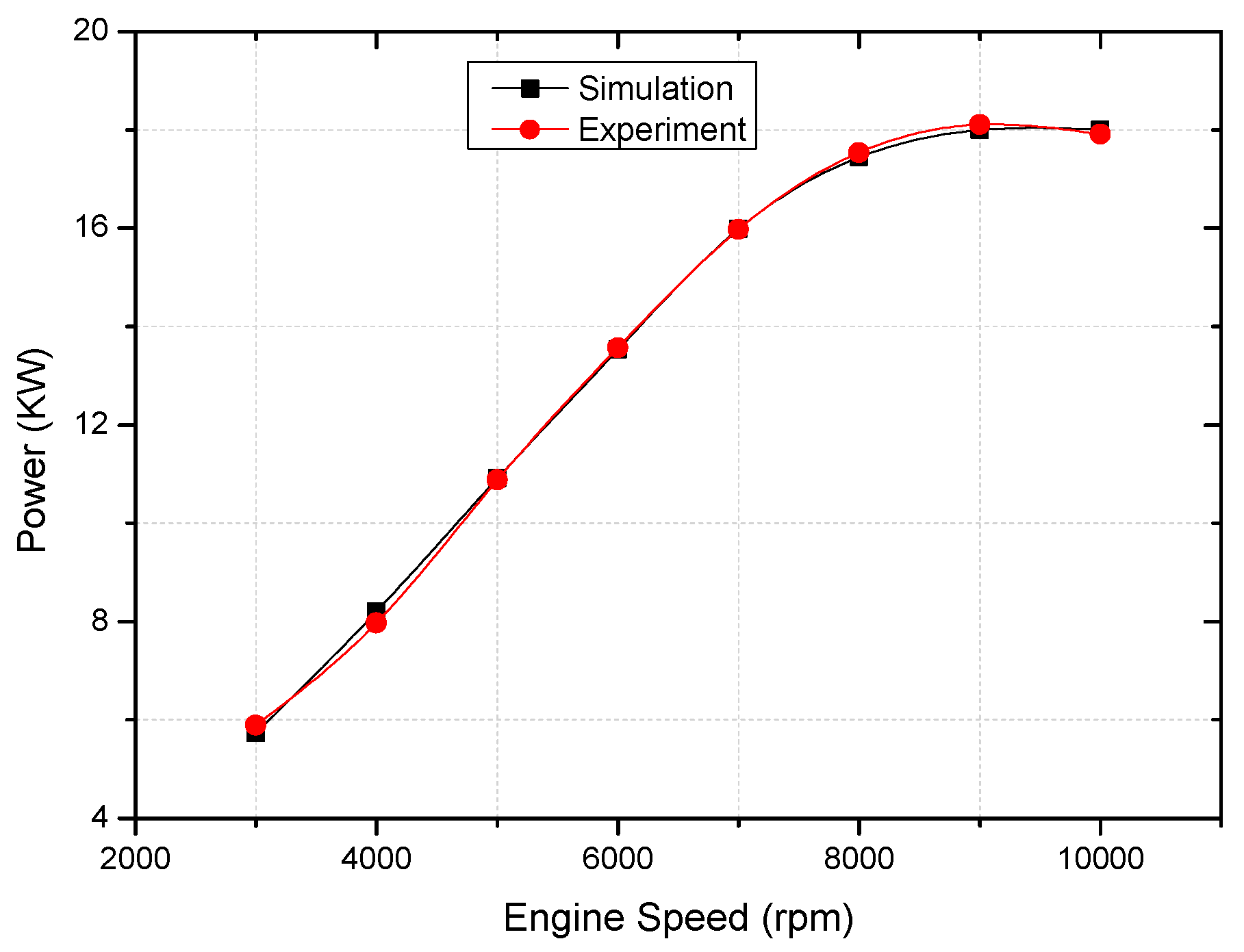



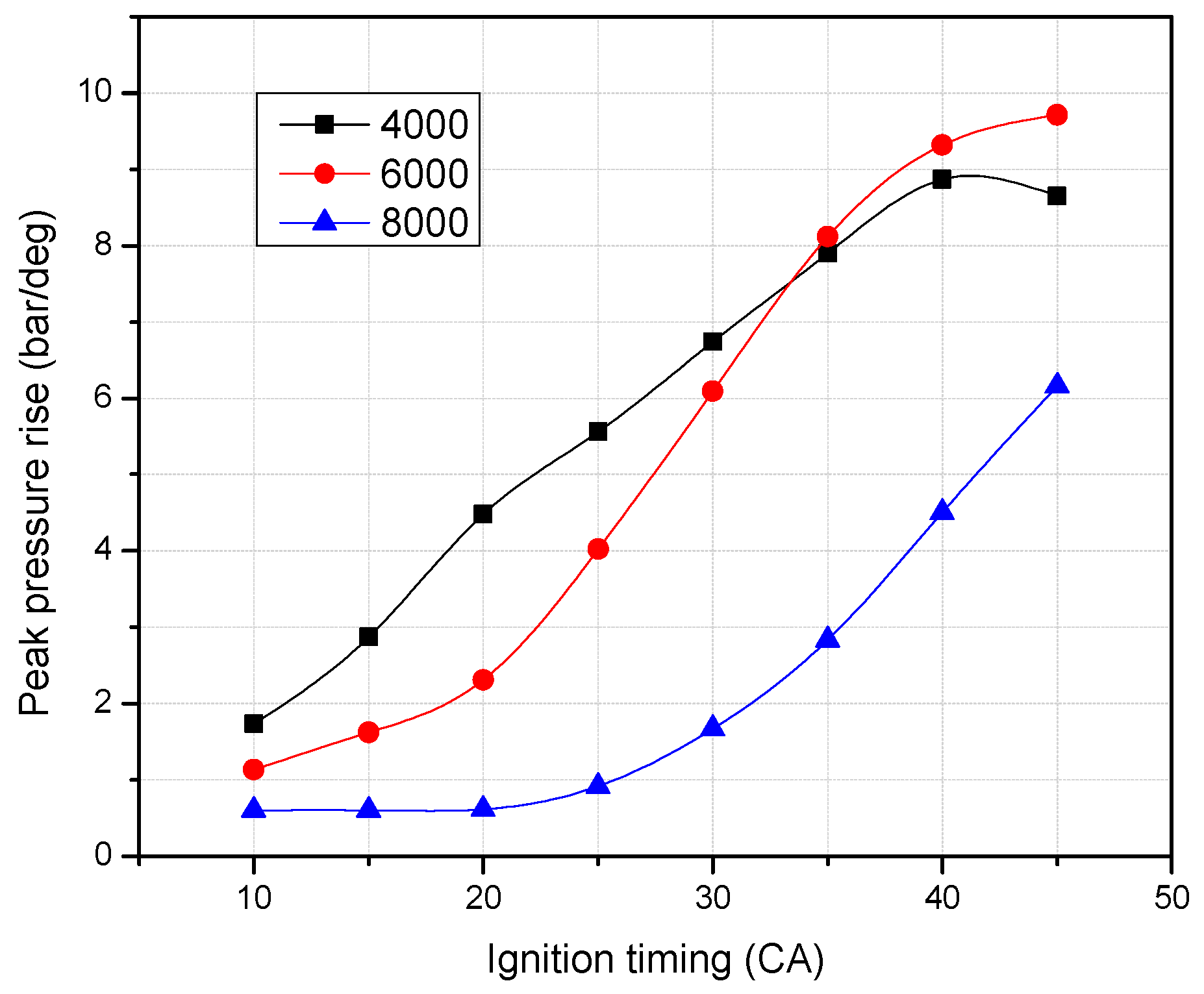
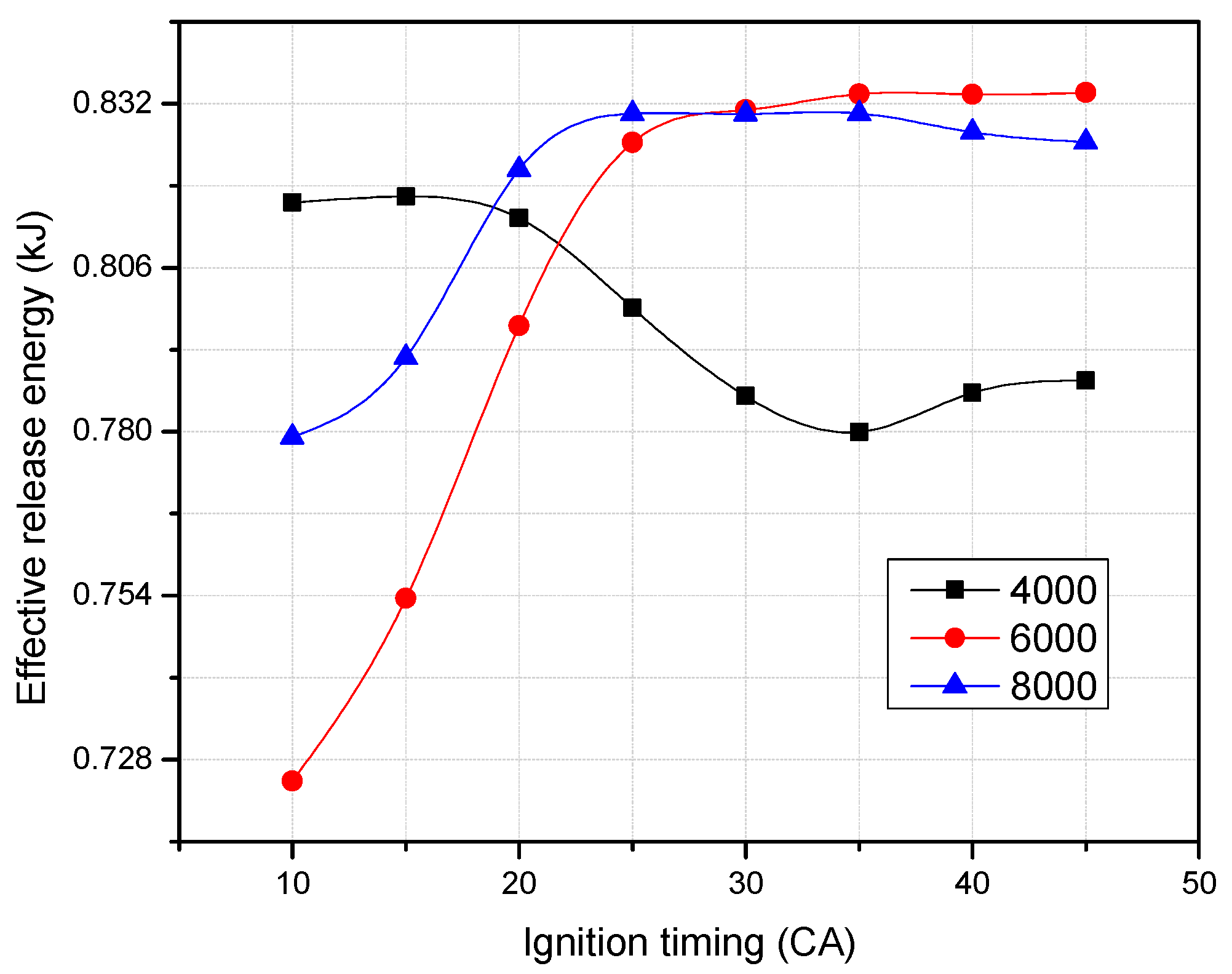
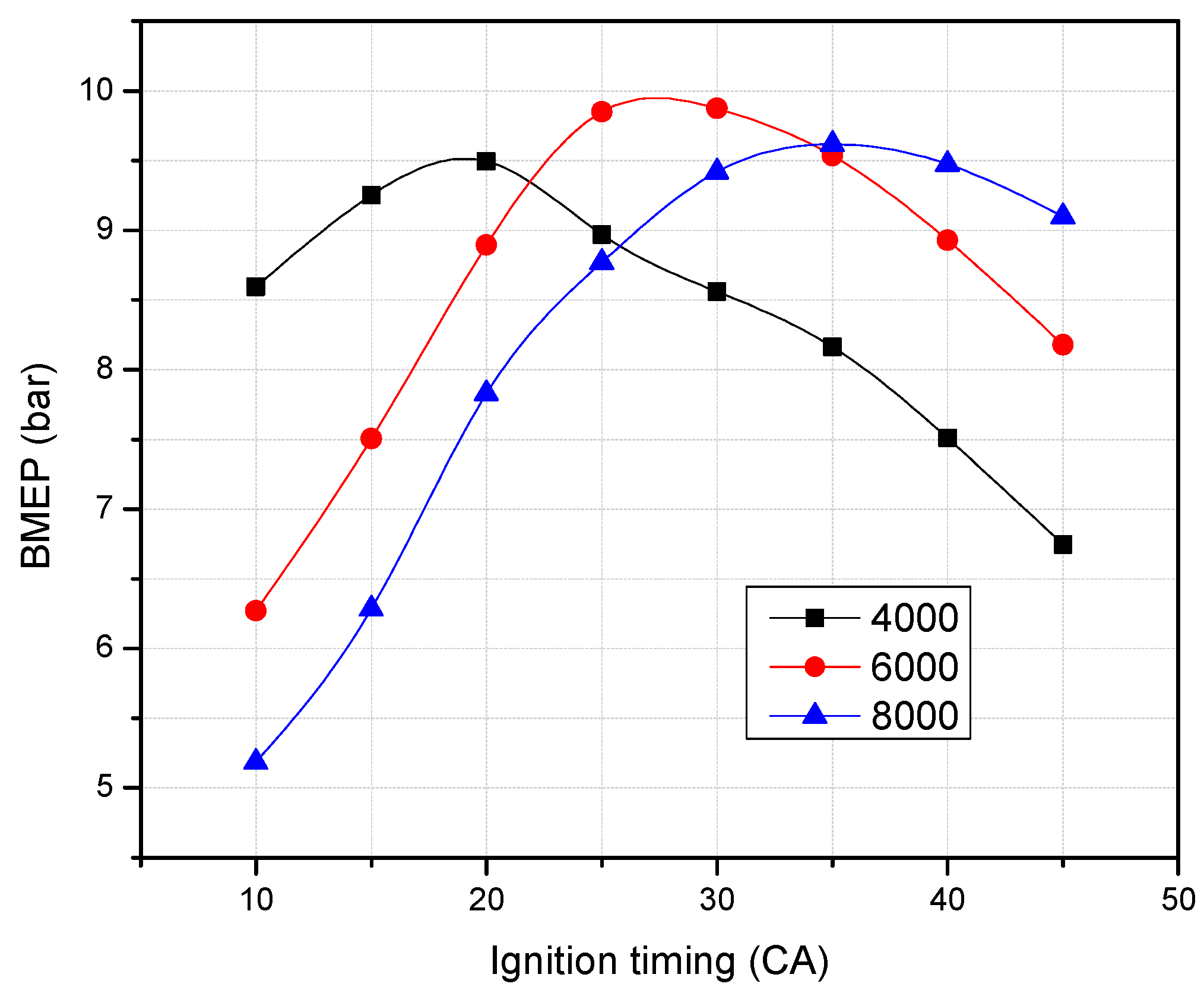
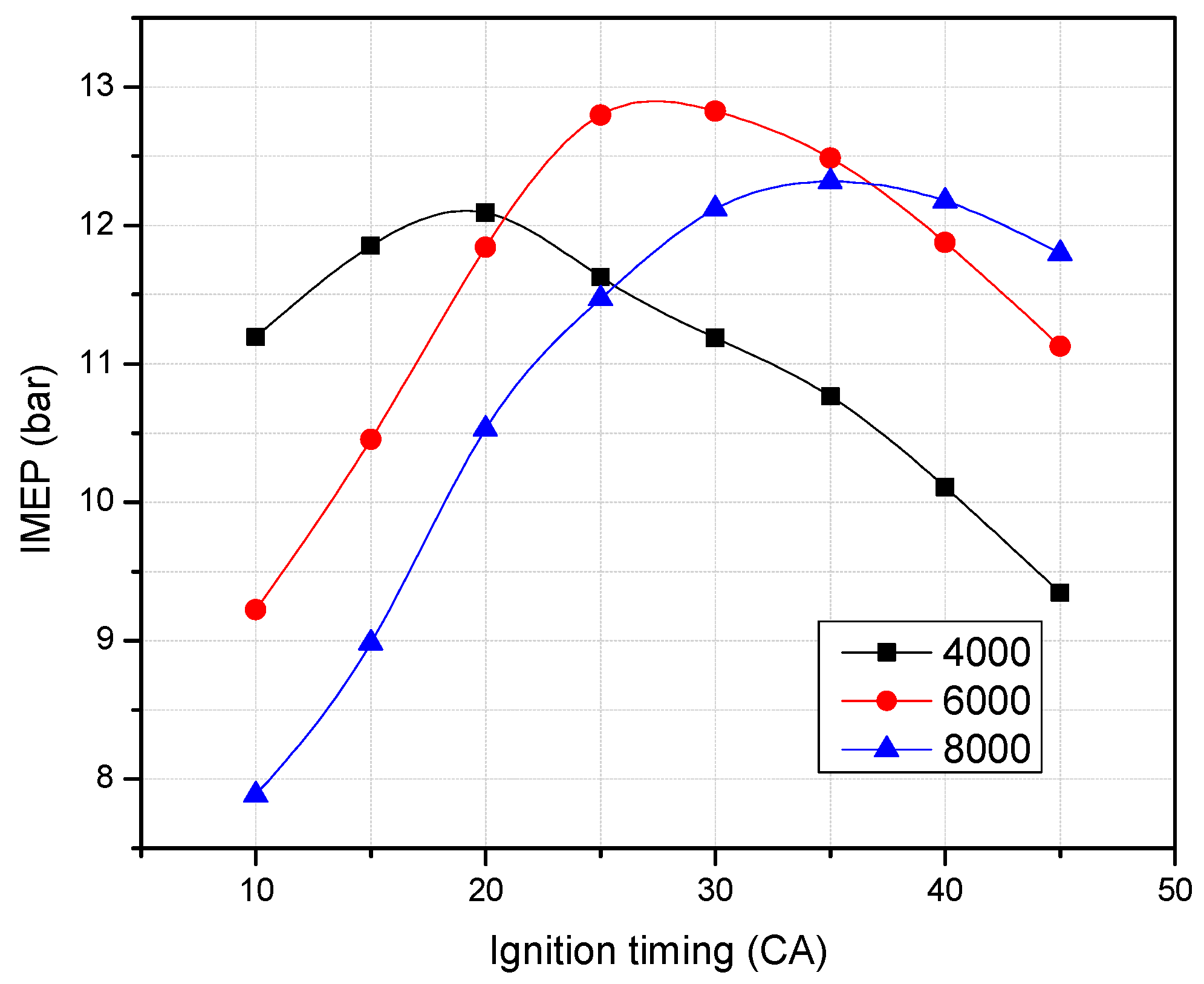

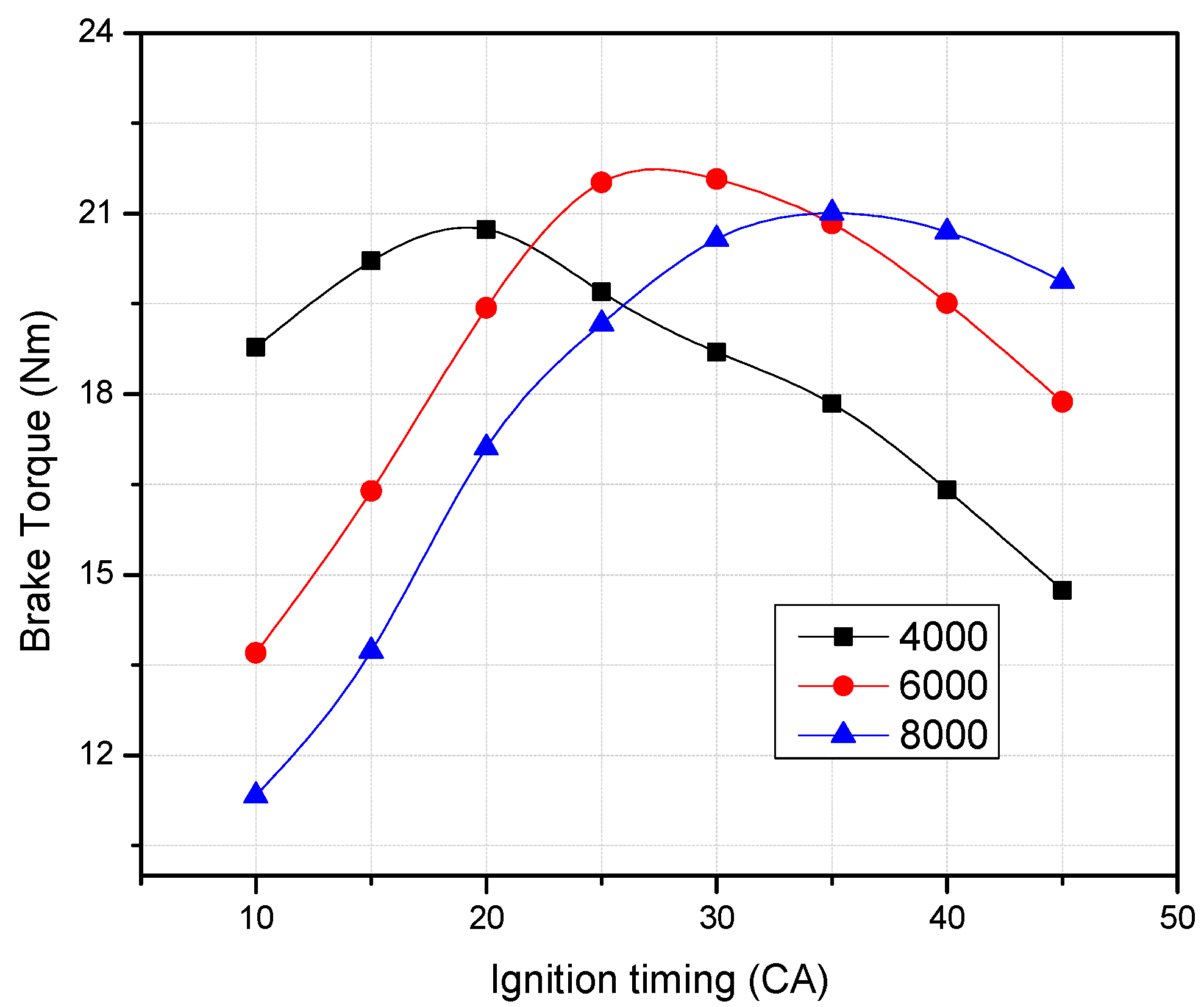
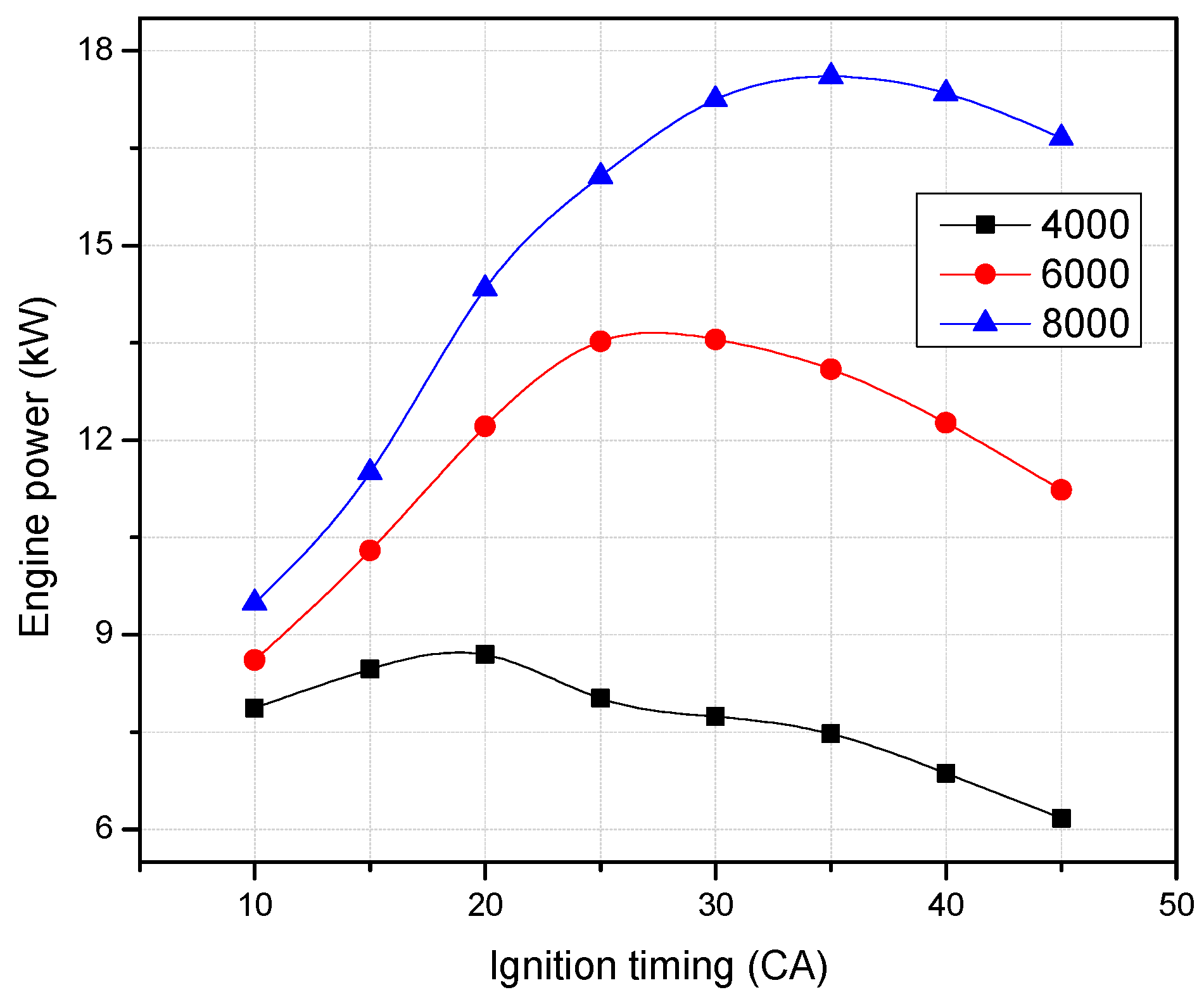


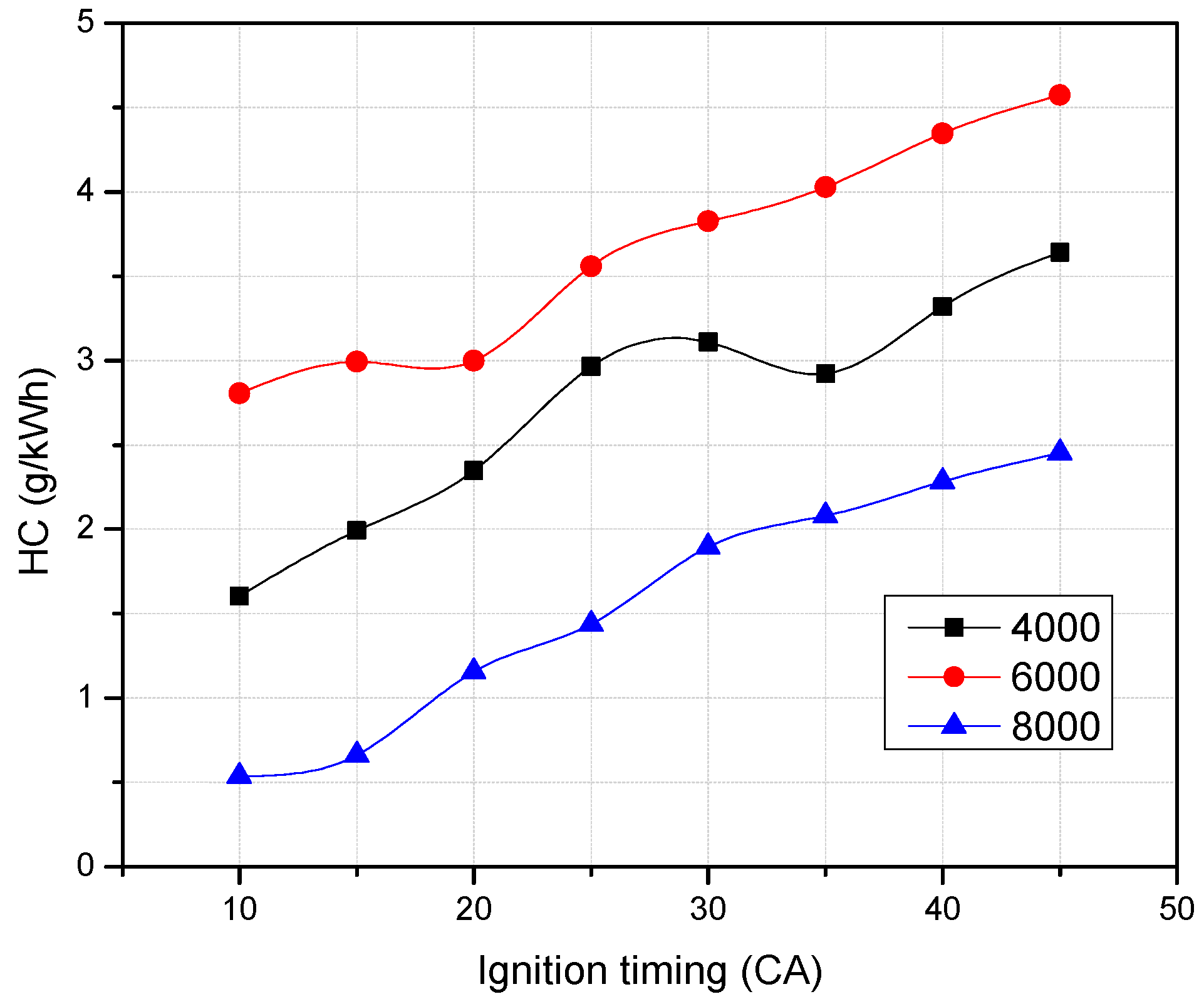
| Parameter | Unit | Value |
|---|---|---|
| Engine model | - | Four stroke, Spark ignition |
| Number of cylinder | - | 2(V-Twin) |
| Compression ratio | - | 11.8:1 |
| Bore | mm | 57 |
| Stroke | mm | 53.8 |
| Connecting rod | mm | 107.9 |
| Intake valve | - | 2 |
| Exhaust valve | - | 2 |
| Cooling system | - | Air cooled |
Publisher’s Note: MDPI stays neutral with regard to jurisdictional claims in published maps and institutional affiliations. |
© 2021 by the authors. Licensee MDPI, Basel, Switzerland. This article is an open access article distributed under the terms and conditions of the Creative Commons Attribution (CC BY) license (https://creativecommons.org/licenses/by/4.0/).
Share and Cite
Yhcmute, Q.-N.; Khoa, N.-X.; Lim, O. A Study on the Effect of Ignition Timing on Residual Gas, Effective Release Energy, and Engine Emissions of a V-Twin Engine. Energies 2021, 14, 4523. https://doi.org/10.3390/en14154523
Yhcmute Q-N, Khoa N-X, Lim O. A Study on the Effect of Ignition Timing on Residual Gas, Effective Release Energy, and Engine Emissions of a V-Twin Engine. Energies. 2021; 14(15):4523. https://doi.org/10.3390/en14154523
Chicago/Turabian StyleYhcmute, Quach-Nhu, Nguyen-Xuan Khoa, and Ocktaeck Lim. 2021. "A Study on the Effect of Ignition Timing on Residual Gas, Effective Release Energy, and Engine Emissions of a V-Twin Engine" Energies 14, no. 15: 4523. https://doi.org/10.3390/en14154523
APA StyleYhcmute, Q.-N., Khoa, N.-X., & Lim, O. (2021). A Study on the Effect of Ignition Timing on Residual Gas, Effective Release Energy, and Engine Emissions of a V-Twin Engine. Energies, 14(15), 4523. https://doi.org/10.3390/en14154523





